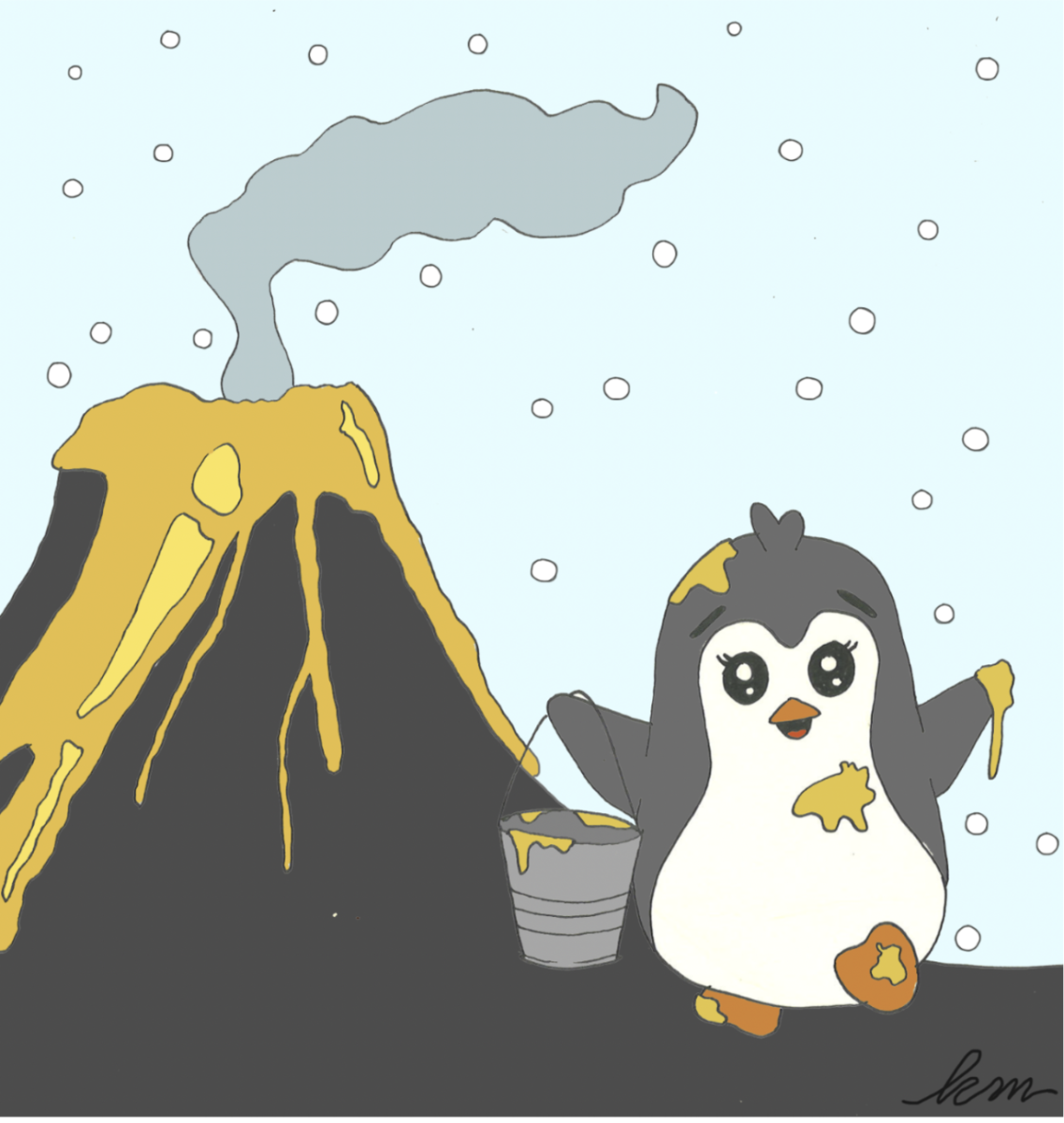It seems like fake news, but it’s not! In Antarctica gold crystals have been detected in the air. The volcano Mount Erebus is spewing out metallic gold particles, totaling to more than $2 million yearly.
Mount Erebus:
While Antarctica is most known for its cold temperatures, hiding between the glaciers are numerous volcanoes including Mount Erebus.
Mount Erebus is believed to have been discovered in 1841 by Captain James Clark. At the time of his expedition the volcano erupted, drawing the attention of his crew. It was later named after one of Clark’s ships, the ‘HMS Erebus’.
Most volcanoes are found in West Antarctica. A study done in 2017 concluded that 138 volcanoes were located in this part of the continent. Although the majority are dormant, about eight or nine of them are thought to be active.
Millions of years ago, prior to freezing, many volcanoes were located in Antarctica. The continent was filled with volcanoes spewing lava and warm vapours. Mount Erebus is one of few that remained through the cooling and continues to astonish scientists.
The volcano is one of three that form Ross Island, land claimed by New Zealand under the Ross Dependency. It is the southernmost active volcano in the world, providing the cold continent with small amounts of heat.
The volcano is the tallest in Antarctica, with a height of 3,800 metres. It sits on top of a thin section of crust, allowing it to regularly expel gas and eject volcanic bombs (partially molten rock) that rise from the interior of the Earth.
The gold:
Scientists have been able to detect gold particles over 1,000 km away from Mount Erebus, finding small traces of the crystals across Ross Island. However, what is truly exciting is that an estimated 80 grams of gold is spewed out each day, which is worth $6,000 (approx. CHF 5,430). In total, amounting to $2.19 million annually (around CHF 2 million).
How is this possible?
Many may wonder how the volcano has come to form gold. Mount Erebus’ formation of the material was initially documented in 1991, referred to as a ‘geological curiosity’. Although discoveries have been made that other volcanoes release gold as well, this Antarctic volcano is the only one that is spewing it out in a metallic form.
The gold precipitates due to heat provided by shallow pockets of magma within the Earth’s crust. This, along with other elements, is carried up by the rising hot water. About 300 metres beneath the surface, hydrogen sulphide gas escapes as the water boils. As a result, the gold can be expelled by the volcano.
What next?
The discovery of gold crystals around Mount Erebus may seem like a plot from a fictional story, but it’s a fascinating reality. Hidden amidst the icy continent, Mount Erebus highlights the geological wonders hidden beneath Antarctica’s frozen surface.
While the formation of gold within volcanic environments is not unprecedented, the metallic form in which it is expelled by Mount Erebus distinguishes it as a rare phenomenon.
As scientists continue to research the mysteries of Mount Erebus and its golden emissions, they expand current understanding of the Earth’s geological processes. These discoveries serve as a reminder of the diversity and complexity of the planet’s physical landscape. From the icy desert of Antarctica to the fiery depths of its volcanic heart, the Earth never ceases to surprise.





